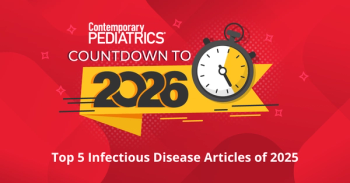
Emergency department serves as equitable location for influenza vaccine delivery
Courtney Nelson, MD, highlights the session she presented at the PAS annual meeting discussing racial and ethnic disparities for influenza vaccine delivery.
In this Contemporary Pediatrics interview, Courtney Nelson, MD, attending physician, director of Quality Division of Emergency Medicine, Nemours Children's Hospital Delaware; assistant professor of Pediatrics, Sidney Kimmel Medical College, discussed racial and ethnic disparities of influenza vaccination in an emergency department (ED) delivery setting.
Nelson was the presenting author of the session "Racial and Ethnic Disparities in an Emergency Department-Based Influenza Vaccine Delivery Model," held at the 2024 Pediatric Academic Societies meeting in Toronto, Canada.
Since there are known racial and ethnic disparities in morbidity due to influenza, Nelson and colleagues sought to describe racial and ethnic differences in influenza vaccine acceptance and administration in an ED-based vaccine delivery model.
"We know that nationally, Black children are much less likely to be vaccinated against the flu, whereas Asian families are much more likely to be vaccinated against the flu, so there's definitely a disparity in vaccination rates, and we see that same disparity within our institution," said Nelson in the interview.
According to the presentation abstract, a multidisciplinary team in 2020 consisting of ED nurses, physicians, educators, and analysts developed a vaccine delivery model "whereby nurses screen for vaccine eligibility during triage and vaccines are administered by the nurse upon discharge from the ED."
The vaccine delivery programs took place over 4 seasons:
- February 2020 to March 2020
- September 2020 to June 2021
- October 2021 to June 2022
- September 2022 to March 2023
Patients who had not received an influenza vaccine that season, who had no contraindications for the vaccine, and whose parents agreed to them receiving the influenza vaccine in the ED were considered eligible.
Vaccine acceptance was defined as the percent of patients whose parents agreed to the influenza vaccination in the ED among those who did not have a flu shot that season. The percent of patients who received the vaccine among those who were eligible was vaccine administration.
Across all 4 seasons, there were 33,678 patients screened who had not received their influenza vaccine for that influenza season. A total of 4782 (14.2%) parents agreed to have the influenza vaccine administered in the ED.
Of the 3231 eligible patients for the flu vaccine, 1608 (49.7%) received it. According to investigators, there was a significant difference in vaccine acceptance among racial and ethnic groups.
Data revealed that Hispanic patients were most likely to accept the influenza vaccine (16-28%), followed by patients classified as "other" (11-22%). Black, non-Hispanic patients were the least likely to accept the vaccine (9-15%), followed by White, non-Hispanic patients (10-19%) (P < 0.0001).
Among all groups, there was no statistically significant difference in the rate of influenza vaccine administration (P > 0.05, each season, respectively), according to the investigators.
"What was sort of interesting to see over the years is vaccine acceptance actually decreased within our White population as well. So that gap is really narrowing between White and Black patients," added Nelson.
"We probably need to do some more thoughtful thinking about why our acceptance rates are so low, especially among our Black children and their families, and how do we target that population to make sure that they're getting vaccinated at the same rates that everybody else is."
Reference:
Liboma C, Chara K, Wilson K, et al. Racial and Ethnic Disparities in an Emergency Department-Based Influenza Vaccine Delivery Model. Session presented at: Pediatric Academic Societies. May 2-6, 2024. Toronto, Canada.
Newsletter
Access practical, evidence-based guidance to support better care for our youngest patients. Join our email list for the latest clinical updates.




